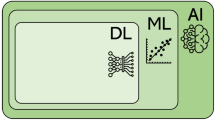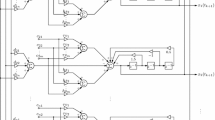Abstract
In general, multibody models are described with a set of redundant coordinates and additional constraints. Their dynamics is thus expressed through differential algebraic equations. As an alternative, the minimal coordinate formulation permits to describe a rigid system with the minimal number of variables leading to ordinary differential equations which can be employed in a coupled state/input estimation scheme. However, in some cases the explicit relation between the full-system coordinates and the minimal coordinates may not be available or analytically obtainable, as for closed-loop mechanisms. In this work, a previously presented deep learning framework to find the non-linear mapping and reduce a generic multibody model from redundant to minimal coordinates is employed. The resulting equations are then exploited in an extended Kalman filter where the unknown inputs are considered as augmented states and jointly estimated. The necessary derivatives are given and it is shown that acceleration measurements are sufficient for the estimation. The method is experimentally validated on a slider–crank mechanism.









Similar content being viewed by others
Abbreviations
- ℤ:
-
integer numbers
- ℝ:
-
real numbers
- \(\boldsymbol{a} \in \mathbb{R}^{n_{1}}\) :
-
column vector
- \(a \in \mathbb{R}\) :
-
scalar
- \(\boldsymbol{A} \in \mathbb{R}^{n_{1} \times n_{2}}\) :
-
matrix
- \(\underline{\boldsymbol{A}} \in \mathbb{R}^{n_{1} \times n_{2} \times n_{3}}\) :
-
3-d tensor
- \(\boldsymbol{I}_{a} \in \mathbb{Z}^{n_{a} \times n_{a}}\) :
-
identity matrix
- \(\boldsymbol{0}_{a_{1}} \in \mathbb{Z}^{n_{a_{1}}}\) :
-
zero vector
- \(\boldsymbol{0}_{a_{1}, a_{2}} \in \mathbb{Z}^{n_{a_{1}} \times n_{a_{2}}}\) :
-
zero matrix
- \(t\) :
-
time
- \(\Delta t\) :
-
time step
- \(\square^{\mathrm{T}}\) :
-
transpose operator
- \(\square^{-1}\) :
-
matrix inverse
- ⊗:
-
Kronecker product
- \(\underline{\boldsymbol{A}} \ \boldsymbol{A}= \underline{\boldsymbol{A}}_{\, \alpha, \beta, \gamma} \ \boldsymbol{A}_{\beta, \gamma}\) :
-
tensor-matrix product (Einstein sum convention)
- \(\dot{\square}=\frac{\mathrm{d}\square}{\mathrm{d}t}, \ddot{\square}=\frac{\mathrm{d}^{2}\square}{\mathrm{d}t^{2}}\) :
-
time derivatives
- \(\frac{\partial \boldsymbol{a}_{1}}{\partial \boldsymbol{a}_{2}} \in \mathbb{R}^{n_{a_{1}} \times n_{a_{2}}} \) :
-
partial derivatives
- \(\square^{-}\) :
-
a priori prediction
- \(\square^{+}\) :
-
a posteriori prediction
- \(\square_{\tau}= \square(t = \tau)\) :
-
\(\tau \)-th time sample
References
Haug, E.J.: Computer Aided Kinematics and Dynamics of Mechanical Systems, vol. 1. Allyn and Bacon, Boston (1989)
García de Jalón, J., Bayo, E.: Kinematic and Dynamic Simulation of Multibody Systems: The Real-Time Challenge. Springer, Berlin (2012)
Hiller, M., Kecskemethy, A.: Dynamics of multibody systems with minimal coordinates. In: Computer-Aided Analysis of Rigid and Flexible Mechanical Systems, pp. 61–100. Springer, Berlin (1994)
Kalman, R.: A new approach to linear filtering and prediction problems. J. Basic Eng. 82(1), 35–45 (1960)
Simon, D.: Optimal State Estimation: Kalman, H Infinity, and Nonlinear Approaches. Wiley, New York (2006)
Kalman, R., Bucy, R.: New results in linear filtering and prediction theory. J. Basic Eng. 83(3), 95–108 (1961)
Sanjurjo, E., Naya, M.Á., Blanco-Claraco, J.L., Torres-Moreno, J.L., Giménez-Fernández, A.: Accuracy and efficiency comparison of various nonlinear Kalman filters applied to multibody models. Nonlinear Dyn. 88(3), 1935–1951 (2017)
Cuadrado, J., Dopico, D., Barreiro, A., Delgado, E.: Real-time state observers based on multibody models and the extended Kalman filter. J. Mech. Sci. Technol. 23(4), 894–900 (2009)
Cuadrado, J., Dopico, D., Perez, J., Pastorino, R.: Automotive observers based on multibody models and the extended Kalman filter. Multibody Syst. Dyn. 27(1), 3–19 (2012)
Pastorino, R., Richiedei, D., Cuadrado, J., Trevisani, A.: State estimation using multibody models and non-linear Kalman filters. Int. J. Non-Linear Mech. 53, 83–90 (2013)
Risaliti, E., Tamarozzi, T., Vermaut, M., Cornelis, B., Desmet, W.: Multibody model based estimation of multiple loads and strain field on a vehicle suspension system. Mech. Syst. Signal Process. 123, 1–25 (2019)
Naets, F., Pastorino, R., Cuadrado, J., Desmet, W.: Online state and input force estimation for multibody models employing extended Kalman filtering. Multibody Syst. Dyn. 32(3), 317–336 (2014)
Palomba, I., Richiedei, D., Trevisani, A.: Reduced-order observers for nonlinear state estimation in flexible multibody systems. Shock and Vibration 2018, 6538737 (2018). https://doi.org/10.1155/2018/6538737
Angeli, A., Desmet, W., Naets, F.: Deep learning for model order reduction of multibody systems to minimal coordinates. Comput. Methods Appl. Mech. Eng. 373, 113517 (2021)
Angeli, A., Naets, F., Desmet, W.: A machine learning approach for minimal coordinate multibody simulation. In: Multibody Dynamics 2019, pp. 417–424. Springer, Berlin (2020)
Angeli, A., Naets, F., Desmet, W.: Deep learning of (periodic) minimal coordinates for multibody simulations. In: 16th International Conference on Multibody Systems, Nonlinear Dynamics, and Control (MSNDC), Presented at-2020 ASME International Design Engineering Technical Conferences and Computers and Information in Engineering Conference, IDETC/CIE2020 (2020)
Kraus, C., Winckler, M., Bock, H.: Modeling mechanical DAE using natural coordinates. Math. Comput. Model. Dyn. Syst. 7(2), 145–158 (2001)
Hernandez, E.M.: Optimal model-based state estimation in mechanical and structural systems. Struct. Control Health Monit. 20(4), 532–543 (2013)
Chatzi, E.N., Fuggini, C.: Online correction of drift in structural identification using artificial white noise observations and an unscented Kalman filter. Smart Struct. Syst. 16(2), 295–328 (2015)
Naets, F., Cuadrado, J., Desmet, W.: Stable force identification in structural dynamics using Kalman filtering and dummy-measurements. Mech. Syst. Signal Process. 50, 235–248 (2015)
Ghosh, B.K., Rosenthal, J.: A generalized Popov–Belevitch–Hautus test of observability. IEEE Trans. Autom. Control 40(1), 176–180 (1995)
LeCun, Y.A., Bottou, L., Orr, G.B., Müller, K.-R.: Efficient backprop. In: Neural Networks: Tricks of the Trade, pp. 9–48. Springer, Berlin (2012)
Abadi, M., Barham, P., Chen, J., Chen, Z., Davis, A., Dean, J., Devin, M., Ghemawat, S., Irving, G., Isard, M., et al.: Tensorflow: a system for large-scale machine learning. In: 12th {USENIX} Symposium on Operating Systems Design and Implementation ({OSDI} 16), pp. 265–283 (2016)
Kingma, D.P., Ba, J.: Adam: A method for stochastic optimization, preprint arXiv:1412.6980 (2014)
Goodfellow, I., Bengio, Y., Courville, A.: Deep Learning. MIT Press, Cambridge (2016). http://www.deeplearningbook.org
Betsch, P., Sänger, N.: On the consistent formulation of torques in a rotationless framework for multibody dynamics. Comput. Struct. 127, 29–38 (2013)
Acknowledgement
The Research Fund KU Leuven, the Flanders Innovation & Entrepreneurship Agency within the IMPROVED project and the AI impulse program of the Flemish Government are gratefully acknowledged for their support.
Author information
Authors and Affiliations
Corresponding author
Additional information
Publisher’s Note
Springer Nature remains neutral with regard to jurisdictional claims in published maps and institutional affiliations.
Appendix A: Input projection matrix
Appendix A: Input projection matrix
Here, the generic input projection into natural coordinates is obtained. Assuming that the external input (to be estimated) \(\boldsymbol{a}\) is a force or a torque in one of the 6 directions:
where \(\boldsymbol{a}_{t}, \ \boldsymbol{a}_{r} \in \mathbb{R}^{3}\) are, respectively, the translational and rotational components.
If the force/torque is acting on the body \(b\), its projection into natural coordinates \(\boldsymbol{a}_{n,b} \in \mathbb{R}^{12}\) can be obtained:
where \(\boldsymbol{\Theta }_{b} \in \mathbb{R}^{3 \times 9}\) is the NC angular transformation matrix:
with \(\boldsymbol{r}_{b} \in \mathbb{R}^{9}\) representing the body rotation matrix components as in Eq. (16) and \(\angle \boldsymbol{\theta }_{f} \in \mathbb{R}^{3}\) as the angular displacement. Knowing [26] the NC force due to a torque along a certain unit vector, the NC angular transformation matrix can be expressed as
Therefore, the obtained NC force can be projected into minimal coordinates as:
where \(\boldsymbol{S}_{b \in n} \in \mathbb{Z}^{12 \times n_{n}}\) is the (generalized Kronecker delta) sparse matrix to select the 12 body coordinates from the \(n_{n}\) natural coordinates and \(\boldsymbol{a}_{m} \in \mathbb{R}^{n_{m}}\) is the MC projection of the unknown external forces. If, instead of the reference body frame, the input is applied on the generic body-attached frame \(f\), a projection as in Eq. (51) has to be performed.
It is finally noted that while for the generic case the derivative of the input projection matrix \(\boldsymbol{S}_{n}\) has to be taken into account in Eq. (54), in the case of purely translational forces it is constant, simplifying the expression.
Rights and permissions
About this article
Cite this article
Angeli, A., Desmet, W. & Naets, F. Deep learning of multibody minimal coordinates for state and input estimation with Kalman filtering. Multibody Syst Dyn 53, 205–223 (2021). https://doi.org/10.1007/s11044-021-09791-z
Received:
Accepted:
Published:
Issue Date:
DOI: https://doi.org/10.1007/s11044-021-09791-z




